What is Array?
可以想像成櫃子,櫃子上有某些連續的編號
–> 有編號的櫃子
Memory is (Generally Viewed as) Array
記憶體就是一個很大的Array
address就是index

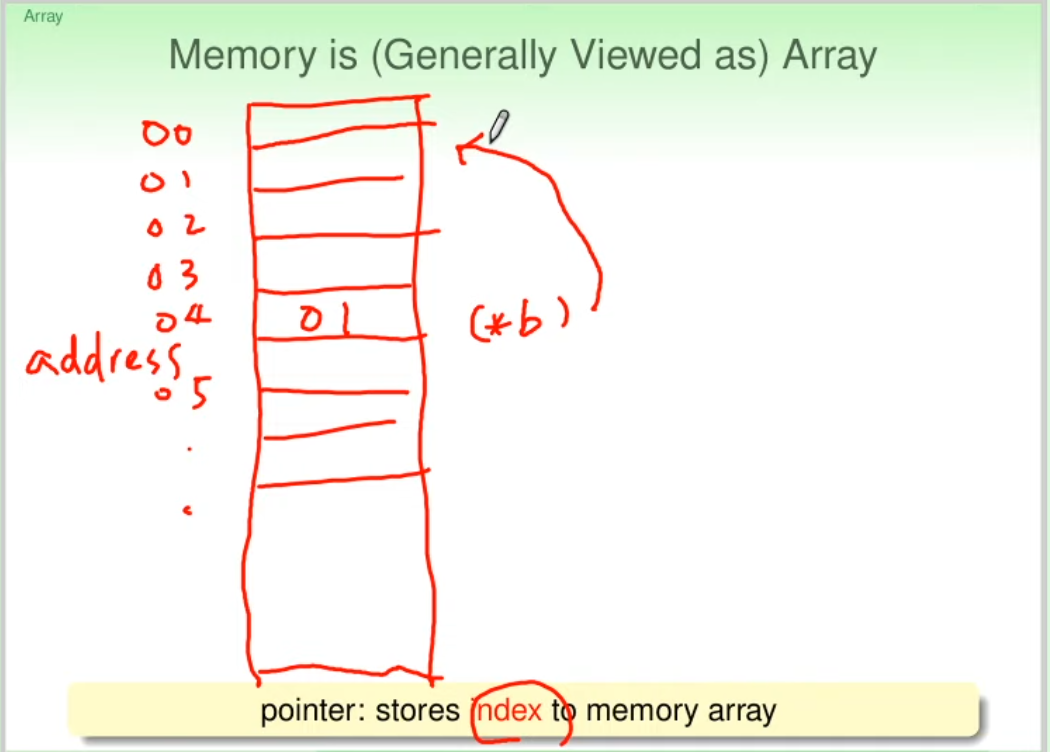
Array as Memory Block in C/C++
反過來說Array也是記憶體

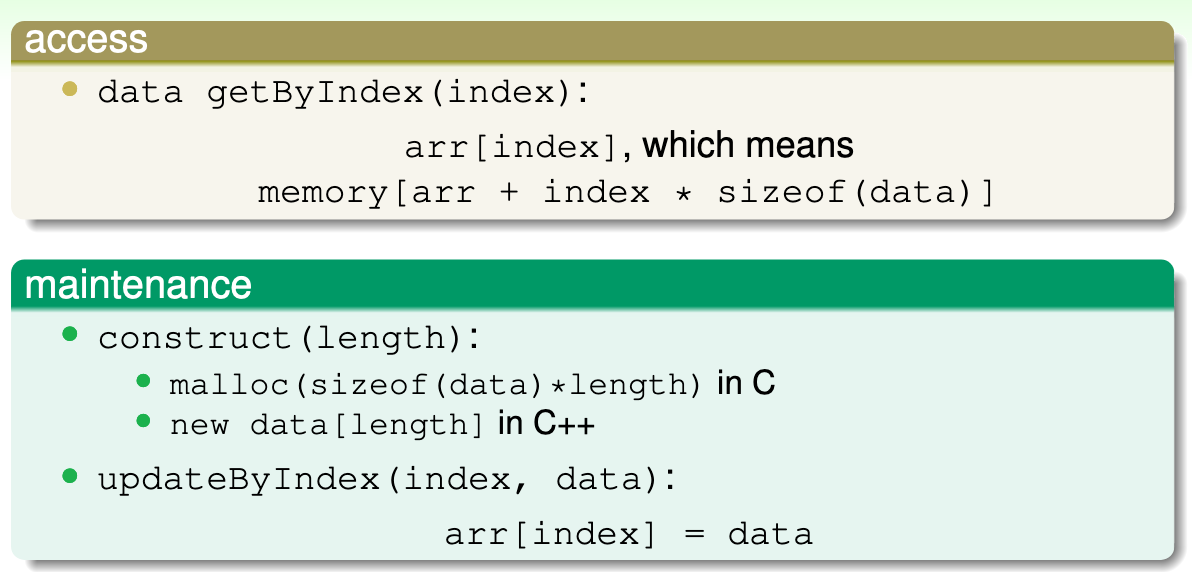
- Note: 一個 Data Structure 看的是如何
取用與維護
Array as Abstract Data Structure

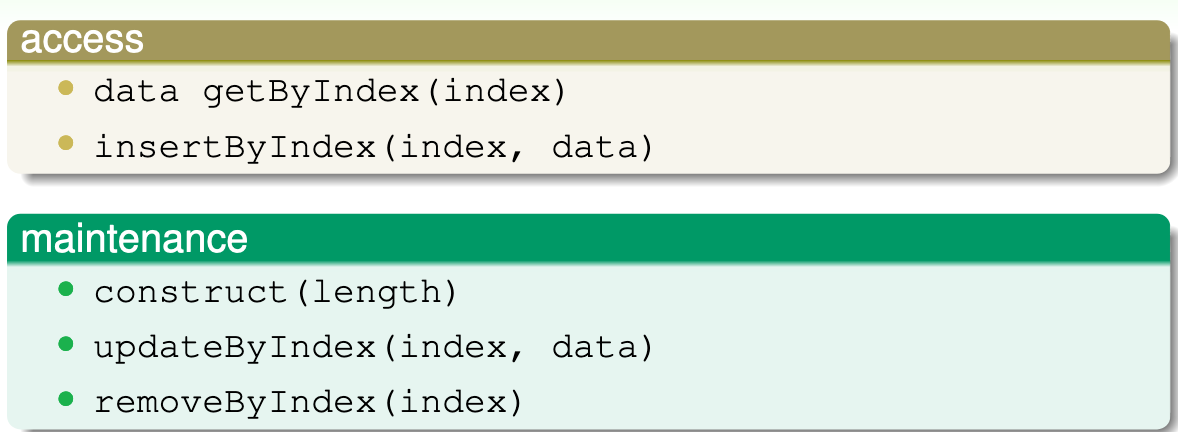
C++ STL Vector: a Growing Array
完整的array implementation

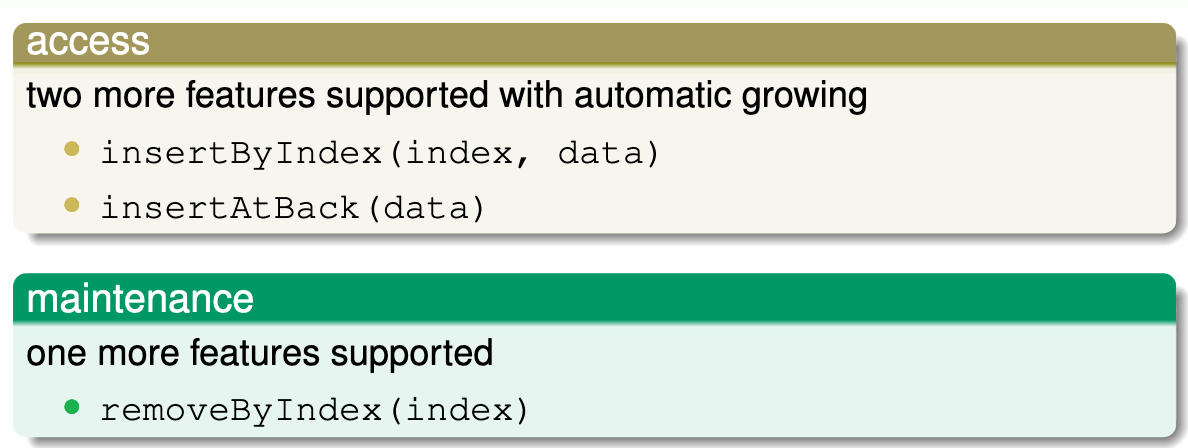
Two Dimensional Array
最熟悉的 Two Dimensional Array: 圖片
One Block Implementation of 2D Array
把2D展開成1D

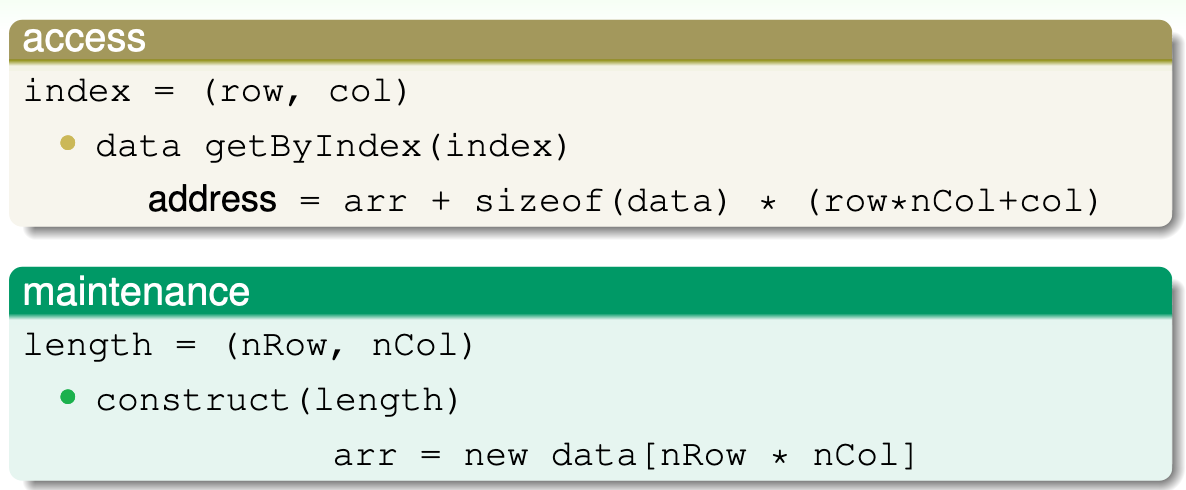
Array of Array Implementation of 2D Array


ex: 第一個raw與第二個raw分開放(每個raw有5個element)

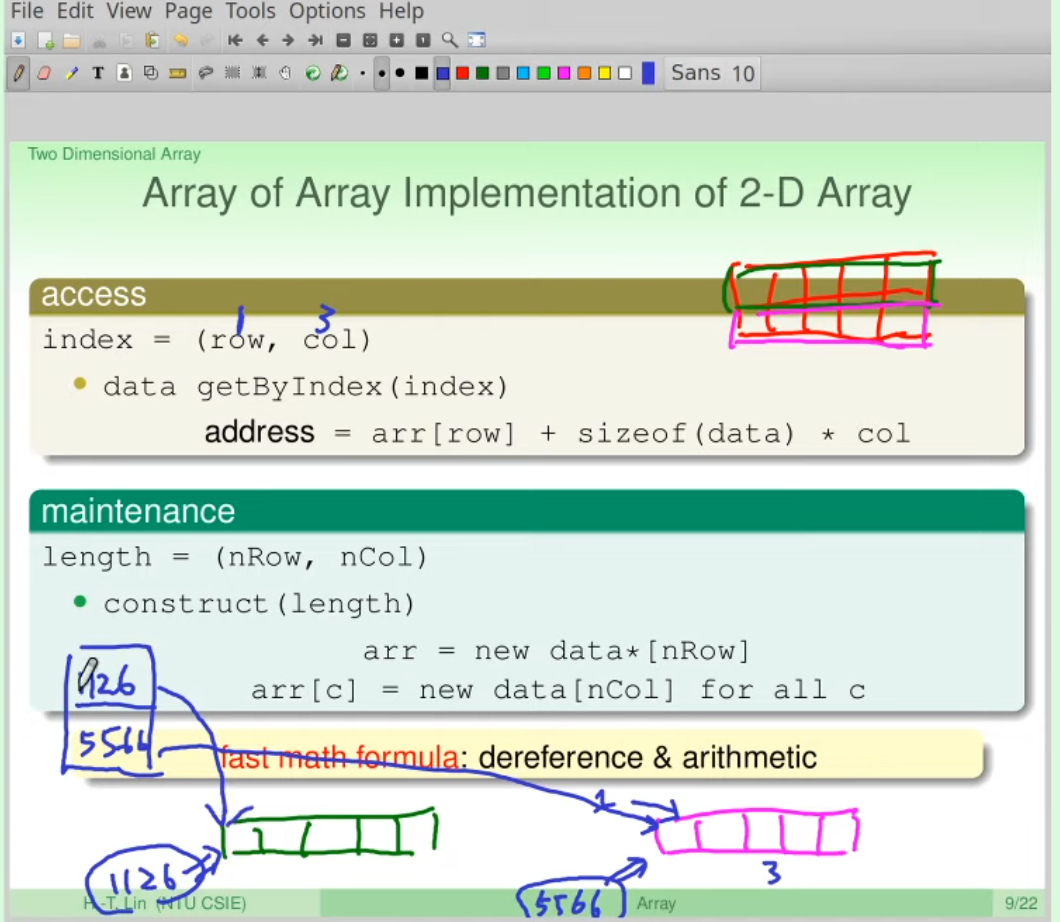
Comparison of Two Implementations
| # | one block | array of array |
|---|---|---|
| space | elements | elments & nRow pointers |
| construct | fixed | prop. nRow |
| get | one deref | two deref |
- tradeoff:
- one block: faster & succinct
- array of array: again easier for programmers
A Table between Two Programs
以下兩種方式,哪種比較快?


Ans:
rowsum()因為
快取機制,rowsum() 是連續的記憶體,比較吃香
Ordered Array
Definition of Ordered Array
An array of consecutive elements with ordered values.
arr[0] <= arr[1] <= arr[2] <= ... <= arr[end-1]
insert of Ordered Array
不能亂插,需考慮值得大小
example:
[2, 6, 7, 13] ^ | 10 ------- Resutl: [2, 6, 7, 10, 13]Maintain
Ordered Array以前在維護
Array時只需要他的開頭(Head)的位置(因為其他位置都可以從開頭算出來),現在如果要維護Consecutive Array時需要知道array的尾巴(Tail),這樣才能知道下次要放新東西時該往哪邊繼續放下去(資料的地方到哪)


田神: 希望同學有機會想想,修正上面的程式碼~
construct of Ordered Array
Example: 1, 3, 7, 4, 6, 5, 2
Method 1: Selection sort
其中一種方法是使用 getMinIndex()幫我們找出一個Array中最小的,每次叫出最小的,放到new array裡或是與原來的交換,依此類推就可以排出ordered array。
此方法叫做選擇排序法(selection sort)。
getMinIndex multiple times (selection sort)
Method 2: Insertion sort
假設array的左邊是排好序的array(一開始就是index 0), 右邊是還沒排好的的array(一開始就是index 1~end),然後從右邊抽一個數字(右邊array的第一個位置)插到左邊,依此類推就可以排出ordered array。
insert multiple times (insertion sort)
update and remove of Ordered Array

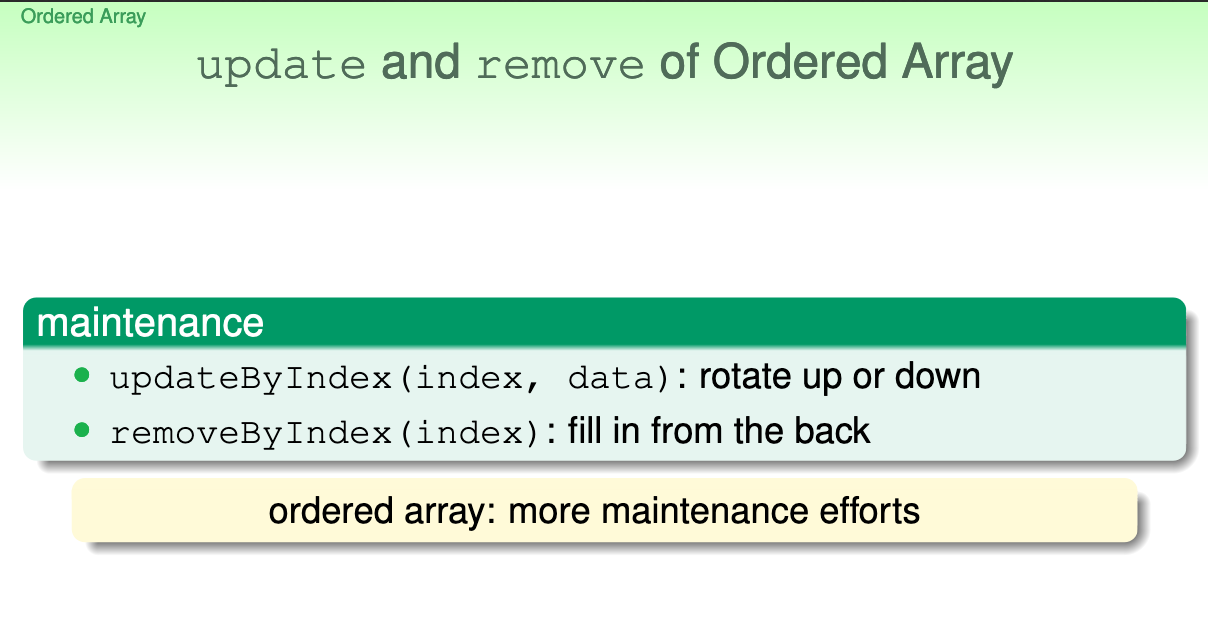
Binary Search with Ordered Array
Application: Book Search within (Digital) Library
數位圖書館,每一本書前面有索引(book ID number),在同一個架子上時書會按照ID大小排序(Ordered Array)
Method 1: Sequential Search Algorithm
已經知道在某個架子上了,那就從左邊找到右邊
for i from 0 to tail
if (arr[i].ID == toFind.ID)
return FIND
end for
eturn NOTFIND
此方法並沒有用到ordered array的優點,就算架子上的書沒按照順序排也沒差。
Method 2: Sequential Search Algorithm with Cut (Ordered Array)
Possibly easier to declare not found
toFind.ID = 5566
for i from 0 to tail
if (arr[i].ID == toFind.ID)
return FIND
if (arr[i].ID > toFind.ID)
return NOTFIND
end for
eturn NOTFIND
Method 3: Binary Search Algorithm (Ordered Array)

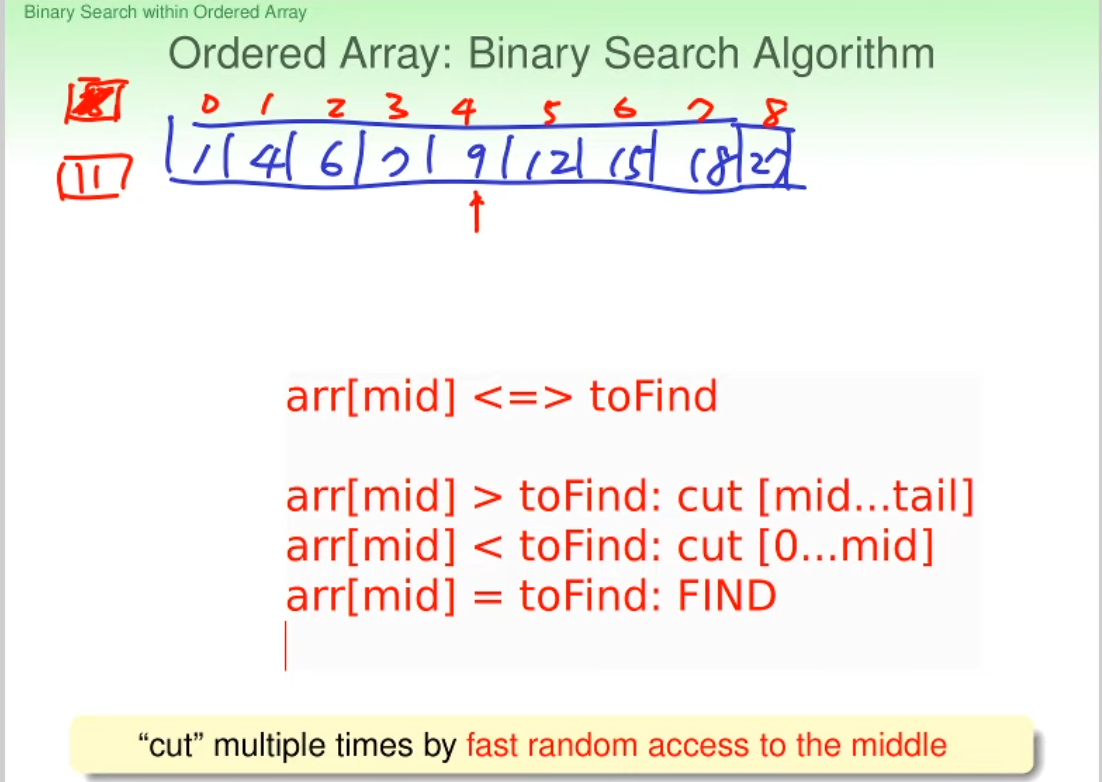
begin = 0
end = tail
while (begin != end) {
mid = (begin + end) / 2
if (arr[mid] > toFind)
end = mid - 1
else if (arr[mid] < toFind)
begin = mid + 1
else if arr[mid] = toFind
FIND
}
